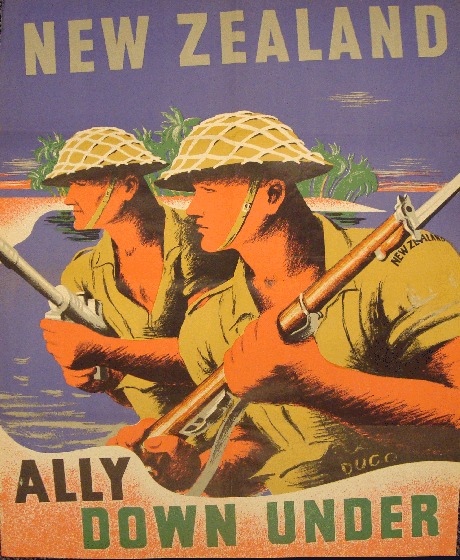Salem and I visited our National Museum, Te Papa, on the weekend. We love going there to see our favourite exhibits. The exhibits of New Zealand's 20th Century History are great.
They have an exhibit about New Zealand's role in WWII and how it affected New Zealanders and our relationships with Britian and with the United States.
The following is information from Te Papa.
In 1900, New Zealand’s strongest ties were with Britain. The colony supported the ‘mother country’ through two world wars.
The United States became an ally when it offered protection from Japan in World War II. The 1951 Anzus defence treaty sealed this new relationship.
But the Vietnam War and New Zealand’s 1980s anti-nuclear stance strained ties with ‘Uncle Sam’ (the US). New Zealand increasingly turned its armed forces towards international peacekeeping and regional security.
World War II marked a new friendship with the US. New Zealand stood faithfully at Britain’s side throughout the war – but the Americans were the ones to defend the Pacific after Japan attacked Pearl Harbor in 1941. Find out about these war years and their effect on New Zealanders’ lives, including on the home front.
Emergency regulations & conscription
New Zealand’s Emergency Regulations Act 1939 was passed shortly after the declaration of war. The act gave the government wide powers. In May 1940, an amendment placed people and property in the hands of the government, enabling the introduction of conscription (compulsory military service). From March 1941, New Zealanders had to dim lights in buildings, streets, and vehicles. The severest restrictions were in coastal towns, which were considered most vulnerable to enemy attack. People used heavy curtains, paper, wood, or paint to black out their windows.
 |
| Peter fraser |
Peter Fraser
Peter Fraser (1884–1950) was New Zealand’s Prime Minister for most of World War II. He skilfully used radio broadcasts and newspapers to build support for the war effort. The government also promoted the war through posters aimed at different sectors of the community. Fraser was the leader to introduce conscription (compulsory military service), which, ironically, he’d been imprisoned for opposing during World War I.
In December 1941, Japan attacked American forces at Pearl Harbor in Hawai‘i. The war was suddenly on New Zealand’s doorstep, but the country’s soldiers were fighting in North Africa.
Britain had its hands full in Europe, so US troops were sent to New Zealand to operate in the South Pacific. Their arrival brought jazz and pizzazz to wartime New Zealand. The country had a new ‘buddy in arms’.
Contributing on the home front
Practically all New Zealanders contributed to the war effort, including those not in the armed forces. Older men were active in the Home Guard. Many people volunteered for organisations supporting the war, including the Women’s Land Service. Others were made to work in essential industries (‘manpowering’). Still others maintained households and families, knitted and baked for soldiers overseas, and lent savings.
Between 1942 and 1944, half New Zealand’s national income went to fund the war.
To find out more check out http://www.tepapa.govt.nz/WhatsOn/exhibitions/SliceofHeaven/Exhibition/InternationalRelations/Pages/WorldWarII.aspx


















No comments:
Post a Comment